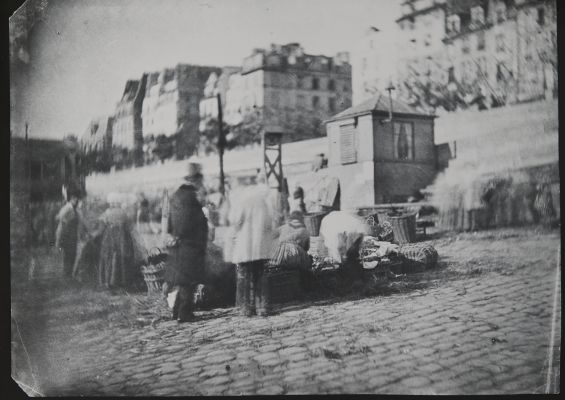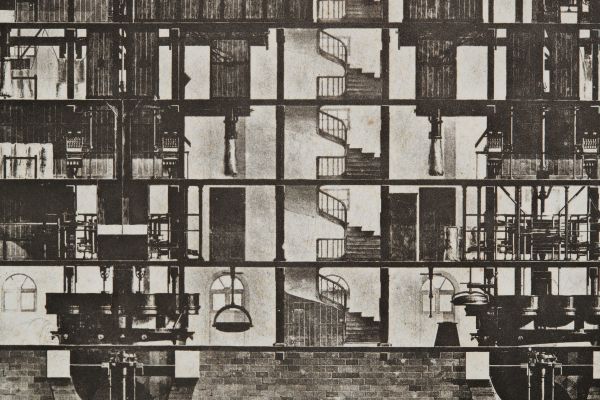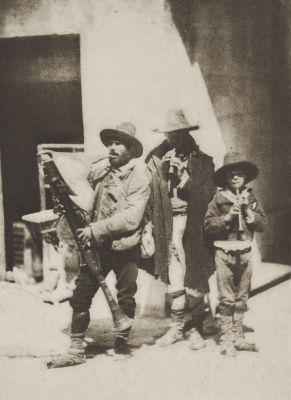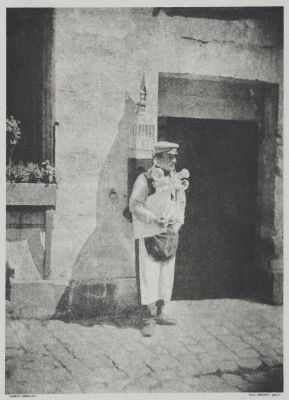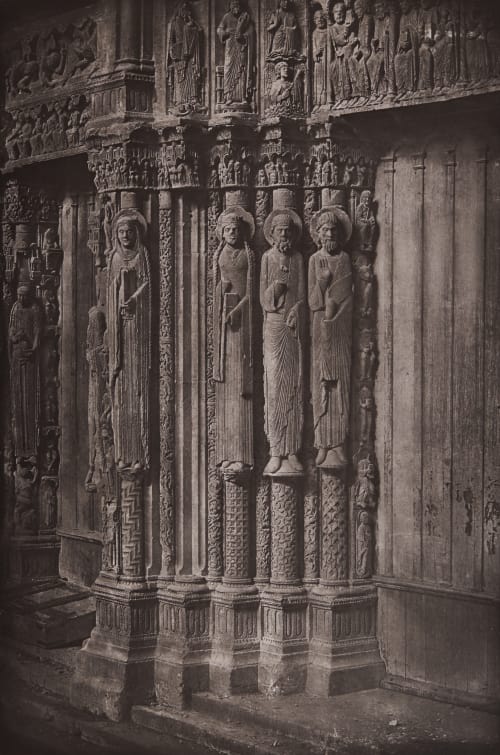
Title
Cathédrale de Chartres Royal PortalArtist
Nègre, Charles (French, 1820-1880)Key FigureDate
1857Process
Photogravure (heliogravure)Atelier
Charles NègreImage Size
59 x 78 cm
The majestic Gothic cathedral at Chartres has long been a source of French national pride. In 1854 Nègre made a series of views of the edifice, including this impressive example. Not only is the photograph particularly large for its day, measuring 20½ x 28 inches, but the artist’s mastery of the early photographic process is apparent in the print’s expressive beauty. The image was so important to Nègre that he crafted one of his tour-de-force photogravure engravings from it a few years later.
Nègre’s photogravures of Chartres, first previewed in 1856 at exhibitions held in Brussels and Paris, and then exhibited internationally through the rest of the decade and into the 1860s, evoked a great deal of praise in the photographic press, as well as in art and science journals. In 1857, editor of the science journal Cosmos listed Nègre’s photographs, photogravures, and damascened plates as “riches du plus brillant avenir.” (The language he uses to describe Poitevin’s photolithographs, which he praises only in terms of their practicality, seems feeble by comparison: les photo-lithographies de M. Poitevin … obtenues si facilement, si promptement, si économiquement […].”) The account in the SFP’s own Bulletin also lapses into superlatives: “Il est impossible de donner plus de relief aux moindres détails de sculpture et de mieux rendre la vérité même de la pierre.” Nègre’s photogravures of Chartres were featured in exhibitions outside of France as well, including the 1858 Photographic Society exhibition in London. [1]
Here the lights, shadows, halftones, everything came in its true relative value; the strongest shadows maintain a transparency that allows recognition of all the details obtained by the photograph itself. This work is certainly the most complete results that heliography has produced to date without the help of retouching. / Finally we must do Mr. Charles Nègre the same justice as Mr. Poitevin, by noting that he was able, from now on, give heliography a serious industrial application. [2]
Négre’s plates of Chartres are some of the largest photogravures ever made and represent the zenith of Nègre’s achievement.
Reproduced / Exhibited
De Andere Fotografie. De Geschiedenis van de Fotomechanische Reproduktie in de Negentiende Eeuw, Tentoonstelling in het Zeeuws Museum, Middelburg, 1989 no. 24
Heilbrun, Françoise. Charles Nègre, Photographe: 1820-1880 ; Arles, Musée Réattu, 5.7. – 17.8.1980. Paris: Éd. des musées nationaux, 1980. no. 142.
French Primitive Photography. New York: Aperture, 1969. no. 33.
Borcoman, James. Charles Negre. Ottawa: Galerie nationale du Canada, 1976. Fig. 164.
Marbot, Bernard. Une Invention Du Xixe Siècle, Expression Et Technique, La Photographie: Collections De La Société Française De Photographie, Paris, [12 Juin-14 Août] 1976,
Bibliothèque Nationale / [catalogue Par Bernard Marbot ; Préface Par Georges Le Rider]. Paris: Bibliothèque nationale, 1976. no. 290.
Hanson, David A. Checklist of Photomechanical Processes and Printing, 1825-1910. , 2017. p. 95.
Collections: musée d’Orsay
References
[1] Lewis, Jacob W. Charles Nègre in Pursuit of the Photographic, 2012.
[2] See “Rapport sur l’exposition ouverte par la Société en 1857,” Bulletin de la Société française de photographie. 3, no. 9 (September 1857): 286-287.
Borcoman, James, and Charles Nègre. Charles Nègre. Ottawa: National Gallery of Canada for the National Museums of Canada, 1976.
La Lumière: Revue De La Photographie: Beaux-Arts, Heliographie, Sciences. Paris, 1851.
Photography in Print : From the Photogravure to the Photobook, Bernard Quaritch ltd, Catalogue 1394.
